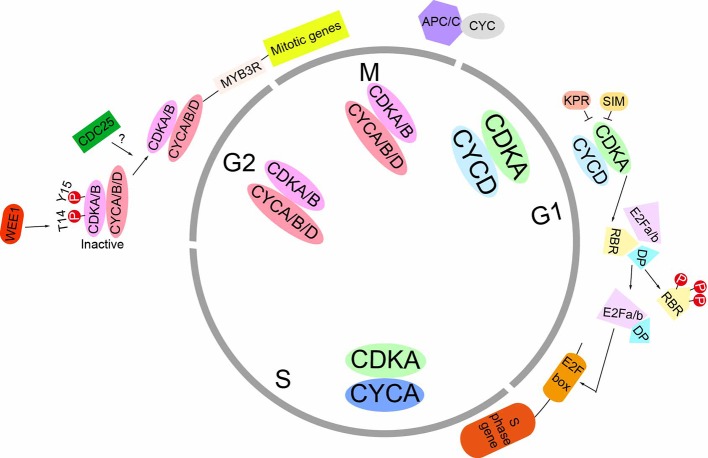Figure 1.
Schematic representation of the mitotic cell cycle in plants. At the G1 phase, D-type cyclins (CYCD) interact with the A-type CDK (CDKA), forming the CDKA/CYCD complex. The activity of CDKA/CYCD complex can be negatively regulated by KPR and SIM proteins. Once activation, this complex phosphorylates RBR to release the transcript factor E2Fa/b-DP. This E2Fa/b-DP complex binds to the E2F box and activate the transcription of S phase genes. At the G2 and M phase S, CYCA and CYCB are strongly expressed and their gene products assemble with CDKA and CDKB. The CYCD can also associate with CDKs. At the beginning of G2 phase, CDK activity are inhibited because of the phosphorylation of Y14 and T15 site by WEEI kinase. The CDC25-related kinase, which removes the inhibitory phosphate groups, still needs to be identified. Once the CDK/CYC complex are active, they phosphorylate MYB3R transcription factors and activate mitotic genes’ transcription. Mitotic exit requires anaphase-promoting complex (APC), which degrades cyclins through ubiquitin-proteasome pathway.

